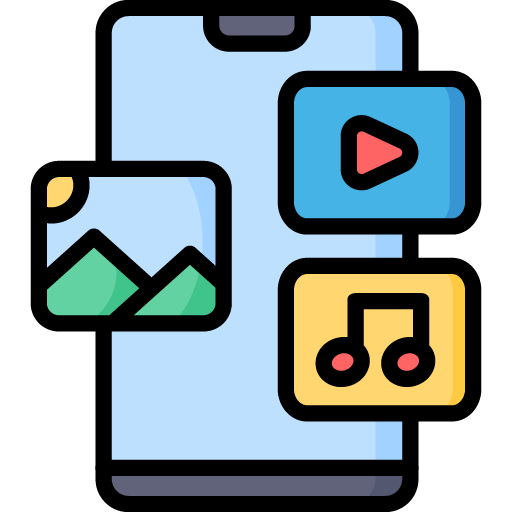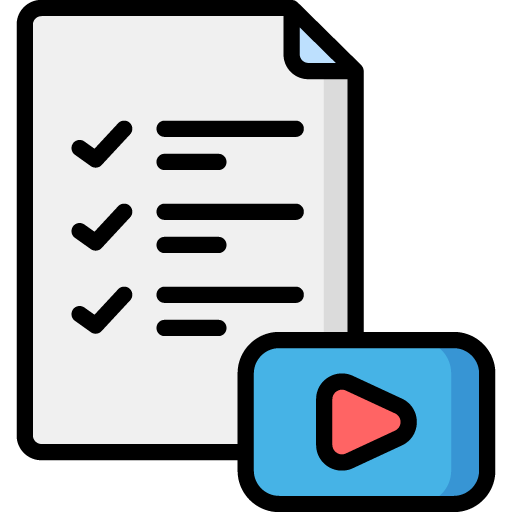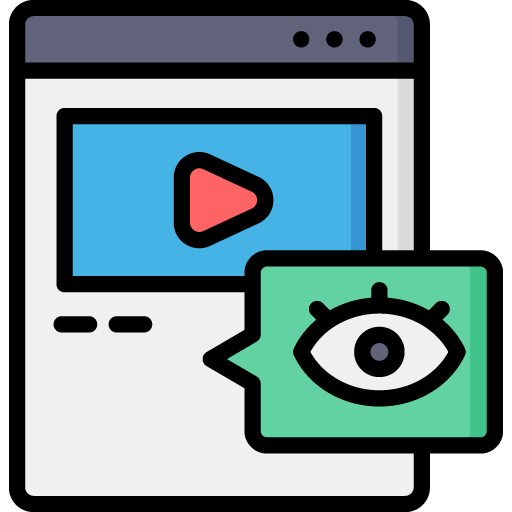It’s one of the most common objections businesses have when discussing video marketing:
“Our audience isn’t on YouTube.”
But here’s the truth:
Your audience is on YouTube — and they’re using it as part of their buying decisions.
From B2B execs researching enterprise tools to busy parents comparing dentists, YouTube has become a go-to destination not just for entertainment, but for education, trust-building, and conversion. Still, many companies dismiss YouTube based on outdated assumptions.
This blog unpacks the biggest misconceptions holding brands back from leveraging YouTube—and shows you exactly why it’s time to think differently.
“Our Audience Isn’t on YouTube”
And Other Marketing Myths, Debunked
Myth #1: “Our audience doesn’t use YouTube”
The Reality:
Everyone uses YouTube. Literally.
YouTube has over 2.7 billion logged-in monthly users (Statista, 2024), making it the second-most visited website in the world—just behind Google. And contrary to the myth, the platform isn’t just for Gen Z or casual viewers. It’s used by decision-makers, parents, professionals, and high-income earners alike.
Need proof?
- Over 70% of B2B decision-makers use video throughout their purchase journey (Google/Ipsos).
- Over 90% of people aged 18–49 watch YouTube monthly in the U.S. (Pew Research).
- YouTube is the #2 search engine in the world, behind Google.
So, even if your audience isn’t commenting on prank videos, they’re absolutely watching “How X Works”, “Top Tools for Y”, or “Best Z in [city]” — and discovering brands just like yours.
Myth #2: “YouTube is only for influencers and entertainment content”
The Reality:
That may have been true in 2012, but in 2025, YouTube is a massive trust-building platform for brands.
Educational and explainer videos dominate some of the highest-performing categories:
- Software companies show product walk-throughs.
- Local service providers give maintenance tips.
- Nonprofits share behind-the-scenes missions.
- B2B firms publish webinars, thought leadership, and client case studies.
Today, YouTube is a hub for learning, not just leisure.
And that’s not just anecdotal:
- 51% of consumers say video helps them feel more confident in a purchase.
- 72% of people prefer video over text when learning about a product or service (Wyzowl).
You don’t need to be an influencer. You need to be helpful and consistent.
Myth #3: “We need to spend a fortune to make good YouTube videos”
The Reality:
While big brands may have professional production crews, what matters most on YouTube is clarity and connection—not cinematic polish.
Audiences respond to:
- Clear audio and decent lighting
- Authentic, value-driven content
- Consistency and relevance to their needs
In fact, lower-budget videos often feel more genuine. A local business owner explaining a process from their office can be more powerful than a polished ad.
The rise of short-form content, screen-recordings, and live Q&As means you don’t need big cameras to make a big impact. You just need a clear message and a basic setup.
Myth #4: “YouTube won’t drive real results for us”
The Reality:
YouTube isn’t just about brand awareness anymore. It’s a conversion engine.
Here’s how brands drive actual ROI from YouTube:
- Increased website traffic from video links and cards
- Higher time on page when videos are embedded on your site
- Improved SEO through video snippets and transcriptions
- Lead generation through video CTAs and affiliate partnerships
- Trust-building that accelerates the sales process
According to Wistia’s 2024 report, brands using consistent video saw:
- 34% higher conversion rates on landing pages
- 48% higher engagement on email campaigns that included a video link
And platforms like Spotter Studio (affiliate-linked in many creator channels) now offer tools for creators and businesses alike to grow smarter with data-backed insights—without needing to chase trends or burn out on content production.
Myth #5: “We already post on Instagram/Facebook—YouTube isn’t necessary”
The Reality:
Each platform serves a different function in the buyer journey.
- Instagram and Facebook are great for short-term engagement, announcements, and visuals.
- YouTube is where people go when they’re actively researching, evaluating, or deciding.
Posting YouTube content builds your long-term discoverability. A well-titled video on YouTube can get found for years. On Instagram? A post dies in 48 hours.
YouTube is not a social media platform. It’s a search engine and educational hub.
If you want to win the moments that matter—when customers are asking questions or comparing solutions—YouTube is the place to show up.
Bonus Myth: “It’s too late to start a YouTube channel now”
The Reality:
It’s never too late when you approach it strategically.
You don’t need to go viral. You need to:
- Serve your niche
- Answer key questions
- Be discoverable via search
Especially for companies in specific industries or locations, there’s often less competition than you think. The key is optimizing your titles, thumbnails, and topics for what people are actually searching—and showing up consistently.
What to Do Instead: Build a Smarter YouTube Strategy
Now that we’ve cleared up the myths, what should your approach look like?
Here’s a simple framework:
1. Start with questions
Use tools like:
- Google’s “People Also Ask”
- YouTube auto-suggest
- AnswerThePublic
Identify what your customers are already searching for—and create content around it.
2. Post consistently (not constantly)
You don’t need to post daily. You need a rhythm your team can maintain:
- Weekly = ideal
- Biweekly = great
- Monthly = fine (if strategic)
Just make sure you show up, keep the quality solid, and answer a real question every time.
3. Use simple gear and good structure
You can shoot on an iPhone. Just make sure:
- Audio is clear
- You have natural light or a soft ring light
- You open with the value and get to the point
Keep videos between 6–12 minutes and give a clear next step (subscribe, visit your website, download a resource).
4. Optimize titles and thumbnails
No clickbait—but don’t be boring either.
Your title should clearly say:
- What problem you’re solving
- Who it’s for
And your thumbnail should be bold, readable, and visual.
Final Thoughts
The biggest mistake companies make with YouTube?
Believing it’s not for them.
In 2025, YouTube is more than a video platform. It’s a search engine, a trust-builder, and a powerful sales funnel—all rolled into one.
If your customers have questions, want solutions, or are comparing options online, YouTube is where they are.
And if you’re not there? You’re letting your competitors own the conversation.
🔧 Want help building your YouTube strategy the right way?
Let us help. From content planning to production to promotion, we guide businesses in turning YouTube into a lead-generating machine.
👉 Schedule a free strategy call!







 Edit Your Footage
Edit Your Footage